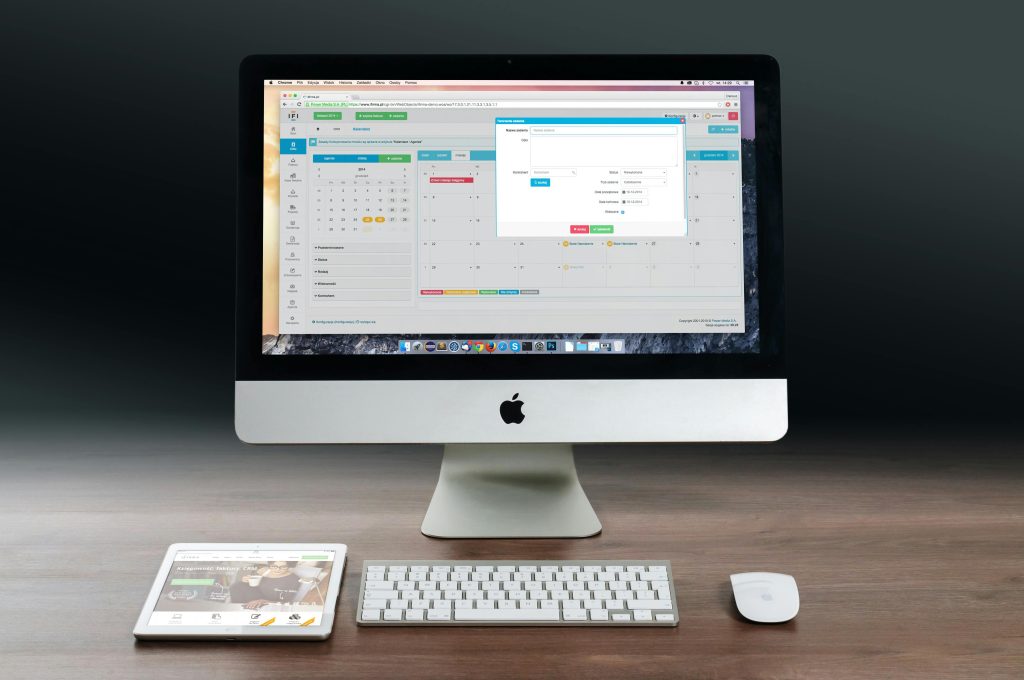If you sell subscriptions, retainers, memberships, maintenance contracts, managed services, leases, or any product billed on a repeating schedule, manual invoicing quickly becomes unmanageable. Missed cycles mean delayed cash flow; copy-paste errors cause customer disputes; inconsistent taxes complicate compliance; and staff spend hours building the same invoice month after month. Automated recurring invoicing solves these problems by turning contractual billing rules into a scheduled, rules-driven engine that generates, validates, delivers, and (often) collects payment on a predictable cadence—leaving humans to handle true exceptions. This guide explains how recurring invoices get generated automatically: the data you need, the timing logic, how line items are assembled, how changes mid-cycle are prorated, and the controls that keep everything audit-ready.
Recurring Invoicing in Plain Terms
A recurring invoice is an invoice that the system creates on a set schedule without manual rebuilding of lines each time. The invoice draws its content from an active agreement—a subscription plan, contract, or standing order—that spells out what to bill, how much, how often, and under what conditions (discounts, usage, minimums, taxes, payment method).

Automated generation means: the system wakes up (via scheduler or event), finds all active agreements due to be billed, calculates charges for the upcoming (or past) service period, bundles them into invoices, applies taxes and credits, assigns invoice numbers, and dispatches the documents and payment instructions—repeat.
When to Automate (Use Cases That Benefit Most)
- SaaS and software subscriptions (per seat, per org, tiered usage).
- Professional retainers (fixed monthly block of hours with overage billing).
- Managed services (IT, security monitoring, maintenance contracts).
- Membership dues (clubs, associations, gyms).
- Leasing / equipment rental (monthly rental + optional usage fees).
- Support & warranty renewals.
- Utility-style metered billing (storage GBs, API calls, transactions).
If you bill the same customer on the same (or patterned) basis more than a few times, automation pays off.
Core Data Model Behind Automated Recurring Invoices
You can’t auto-generate what you haven’t modeled. At minimum, your billing system needs:
| Entity | Key Fields | Why It Matters |
|---|---|---|
| Customer / Account | Billing name, address, tax region, currency, payment method, email contacts | Determines who receives invoice, tax rules, payment routing. |
| Subscription / Contract | Plan ID, start date, term length, renewal policy, status, cancellation date | Drives schedule and eligibility. |
| Billing Schedule | Frequency (monthly, quarterly), billing anchor day, bill in advance vs arrears | Tells engine when and for what period to generate charges. |
| Price Components | Recurring fee, quantity, tiering rules, usage meter IDs, minimum commits | Defines what to charge each cycle. |
| Discounts / Promotions | % off, fixed amount, duration (# cycles), ramp pricing | Applied at invoice build time. |
| Tax Profile | Exemption flags, tax IDs, jurisdiction mapping | Accurate tax calculation. |
| Invoice Template Settings | Language, logo, custom fields, footer notes, PO # requirement | Controls document layout & required data. |
Optional but powerful:
- Proration Rules Table (how to handle plan changes mid-cycle).
- Credit Balance Ledger (carry forward deposits/credits).
- Usage Buckets (collect metered data to invoice later).
Billing Cycle Mechanics: Timing Is Everything
Automated systems revolve around a billing clock anchored to each subscription. Understand these timing concepts:
Billing Anchor Date
The reference day for each cycle—often the subscription start date (e.g., started June 12 → bills every 12th) or a normalized calendar rule (bill 1st of month). Aligning many customers to shared anchors eases accounting but may require proration at sign-up.
Frequency
Monthly, quarterly, semiannual, annual, 28-day, custom N-day cycles—store explicitly.
Service Period vs Invoice Date
- Service Period: The date range the charges cover (e.g., Aug 1–Aug 31).
- Invoice Date: The date the invoice is issued (could be before or after the service period).
- Due Date: Payment deadline; may be immediate (auto-charge) or Net terms.
Bill In Advance vs In Arrears
- In Advance: Invoice upcoming period (common in SaaS).
- In Arrears: Invoice for usage that already occurred (utilities, hourly support overages).
Proration Alignment
When a customer starts mid-cycle or upgrades mid-month, you create a partial charge (or credit) to align them to the regular billing anchor. Store proration fractions or compute by day count (Actual/Actual, 30/360—define policy).
Automatic Invoice Generation Workflow (Step by Step)
Below is a generalized nightly (or hourly) batch process. Real systems may be streaming/event-driven, but the logic is similar.
- Scheduler Fires (cron, job queue, event bus).
- Fetch Billable Subscriptions where:
- Status = active (or trial ending requiring first bill).
- Next_invoice_date ≤ current time.
- Not suspended / hold.
- Determine Service Window based on billing rules:
- If in advance → [anchor, anchor + freq).
- If in arrears → [previous anchor, current anchor).
- Collect Billable Items:
- Fixed recurring charges (quantity × unit price prorated if needed).
- Usage records aggregated since last billing (meter tables).
- One-time fees scheduled for this cycle (setup waived?).
- Credits / discounts expiring this cycle.
- Calculate Line Amounts:
- Apply quantity & tiering logic.
- Apply proration (days_used / days_in_period).
- Apply recurring discounts (% or fixed).
- Subtotal per line.
- Apply Taxes:
- Determine jurisdiction from ship-to, bill-to, nexus rules.
- Taxability by item category.
- Compute tax lines; optionally show per jurisdiction (VAT, GST, state tax).
- Assemble Invoice Header:
- Assign invoice number (sequential / per legal entity).
- Invoice & due dates.
- Customer reference (PO #, contract #).
- Currency.
- Balance Credits / Deposits (optional).
- Validation Checks:
- Zero/negative totals? (Handle credits separately.)
- Missing tax data?
- Duplicate invoice detection (same period already billed).
- Persist Invoice (draft state).
- Finalize / Post:
- Lock monetary fields.
- Create AR ledger entry.
- Trigger PDF/HTML render.
- Deliver & Collect:
- Email to billing contacts; post to portal.
- If auto-pay enabled, initiate payment (card, ACH).
- Record payment or open balance for dunning.
Line Item Construction: The Heart of the Invoice
Automated accuracy depends on clear rules for assembling lines.

Fixed Recurring Charges
Example: “Pro Plan Subscription – 25 seats @ $20 / seat / month.”
Stored as: unit price, quantity, frequency, rounding rules.
Quantity Changes
If seats changed mid-period, system prorates old seat count for days before change and new seat count for days after change. Some systems net these into one “proration adjustment” line.
Usage / Metered Charges
In-arrears metrics (API calls, GB storage, SMS sends) logged daily. At billing, aggregate and apply pricing model:
- Flat per unit
- Tiered (first X at rate A, remainder at rate B)
- Volume (all units priced at tier based on total)
- Threshold minimums (bill at least $N)
Discounts
- Time-boxed: 20% off first 3 cycles.
- Ramp Pricing: $100 month 1–3, $200 month 4–12.
- Bundle Credit: Free 100 API calls; usage beyond that billed.
Store discount expiry and stacking rules.
Credits & Adjustments
Manual credits (goodwill), SLA credits, prepayments. Draw down credit balance; show as negative line.
Taxes
Add lines or embedded tax totals depending on region. For VAT/GST invoices, show tax ID numbers and tax base.
Numbering, Dates, and Coverage Clarity
Accounting and audit teams care deeply about invoice metadata. Automate these fields carefully.
- Invoice Number Sequence: Unique, gap-free per legal entity where required by law. Use prefix by entity or region if multi-geo.
- Service Period Display: Always show “Service period: Aug 1–Aug 31 2025” so customers reconcile charges.
- Issue vs Performance Date: Some tax regimes tax at supply of service; include both if needed.
- Purchase Order Reference: Pull from customer record or from subscription custom field; fail invoice if PO required but missing (configurable).
Delivery & Payment Automation
Once generated, automatic delivery and optional automatic collection reduce DSO (days sales outstanding).
Document Rendering
Generate PDF and/or HTML invoice. Include barcode/QR or clickable pay link referencing invoice ID.
Email Dispatch
Template per brand/country; attach PDF or link to portal. Include payment instructions, bank details, and summary of autopay attempt date.
Customer Portal
Expose invoice history, download docs, update payment method, see upcoming charges.
Auto-Pay
If customer authorized card/ACH:
- Create invoice.
- Immediately (or at due date) attempt payment.
- Record payment success; mark invoice paid.
- On failure, trigger dunning flow (retry schedule + notifications).
Handling Mid-Cycle Changes (Proration & Adjustments)
Real customers change plans. Automation must respond predictably.
Upgrades / Add-Ons
- Bill incremental difference immediately (prorated) or next cycle depending on policy.
- Update recurring quantity going forward.
- Optionally extend billing anchor change or keep original anchor.
Downgrades
- Credit unused portion (prorated credit memo) or apply at next cycle.
- Adjust feature entitlements promptly.
Pause / Suspend
- Freeze billing clock; do not generate while paused.
- Decide whether entitlements stop immediately or at end of paid period.
Cancellation
- End-of-term: Continue until current period ends; no new invoices.
- Immediate: Issue final prorated credit or refund; disable renewal.
Trial to Paid Conversion
- Trial ends triggers first paid invoice (prorated if trial not aligned to cycle or full first term depending on policy).
Make proration rules explicit and automated; surprise bills = churn.
Multi-Currency & Localization
If you operate globally:
- Contract Currency vs Functional Currency: Store contract currency per subscription; compute local taxes in that currency; convert to functional currency for accounting.
- Exchange Rates: Use daily or monthly average; snapshot at invoice creation for audit repeatability.
- Localized Formatting: Date formats, decimal separators, and tax wording vary; template by locale.
- Tax Regimes: VAT inclusive vs exclusive pricing; automated invoice must display correct tax breakdown and registration numbers.
Accounting Integration: From Invoice to Ledger
Automated recurring invoices feed Accounts Receivable and revenue recognition.
AR Posting
- Create AR document with open balance per customer.
- Update aging buckets (current, 30, 60 days).
- Apply payments and credits automatically.
Revenue Recognition
If billing in advance for future service, defer revenue and recognize ratably over service period. Systems often create revenue schedules linked to invoice lines (amount, start, end).
Deferred Revenue Adjustments
Prorations mid-term trigger deferral true-ups; track unearned vs earned.
GL Mapping
Each invoice line maps to a revenue account (subscription revenue, usage revenue, support revenue); tax lines map to liability accounts.
Controls, Compliance & Audit Readiness
Recurring automation touches regulated financial records; build controls in.

- Immutable Posted Invoices: After posting, prevent edits; use credit memos for adjustments.
- Sequential Numbering Enforcement: Detect gaps or duplicates.
- Change Logs: Who changed subscription quantity? When? Capture before/after.
- Tax Determination Audit Trail: Record jurisdiction decision, rates applied.
- Payment Authorization Tokens: Do not store raw card data; use tokenized gateway references.
- SOX / Internal Control Evidence: Document automated job runs, error logs, exception resolutions.
Metrics & Monitoring for Recurring Invoicing Health
Track both operational efficiency and financial outcomes.
| Metric | Why It Matters |
|---|---|
| % of invoices auto-generated (vs manual) | Automation adoption |
| Invoice error rate (lines needing manual edit) | Data quality issues |
| On-time generation rate | Scheduler health |
| Auto-pay success rate | Cash flow predictability |
| DSO (Days Sales Outstanding) | AR performance |
| Churn linked to billing errors | Customer experience signal |
| Proration events per month | Plan change volume; complexity |
| Credit memo ratio | Post-invoice corrections; root cause analysis |
Dashboards should highlight failed jobs, tax calc failures, and payment declines.
Implementation Roadmap (Phased)
Phase 1 – Data Cleanup & Policy Definition
Normalize SKU catalog, price plans, tax rules, terms, invoice numbering policy, proration approach.
Phase 2 – System Configuration
Load customers, subscriptions, schedules into billing engine. Configure invoice templates by locale.
Phase 3 – Sandbox Simulation
Generate sample cycles across edge cases: mid-month start, upgrade, discount expiry, tax region change. Validate math.
Phase 4 – Limited Live Pilot
Enable automated billing for a small customer cohort; compare auto invoices to legacy manual ones; tune rounding & taxes.
Phase 5 – Auto-Pay & Notifications
Layer payment automation; test dunning.
Phase 6 – Full Migration
Migrate remaining customers; freeze manual process; monitor variance.
Phase 7 – Continuous Improvement
Usage billing, advanced discounts, self-service portal, analytics.
Common Pitfalls & How to Avoid Them
| Pitfall | Pain | Prevention |
|---|---|---|
| Incomplete master data (missing tax region) | Wrong tax, delayed invoices | Validate required fields before activation |
| Misaligned billing anchors | Confusing partial bills | Standardize anchor policy; show clear service periods |
| Hidden rounding differences | Penny mismatches & disputes | Define rounding (banker’s vs up/down) globally |
| Manual overrides in spreadsheets | Out-of-sync balances | Lock posted invoices; use credits |
| Ignored timezone | Off-by-one day billing | Normalize to UTC + local display |
| Usage data lag | Under/over billing | Cut off usage windows; late usage goes to next cycle |
| Coupon expiry not enforced | Lost revenue | Store cycle counters; auto-remove discount |
Quick Start Checklist
Data & Policy
- Unique customer IDs, billing contacts validated.
- Subscription records include start, term, frequency, anchor.
- Pricing components loaded; proration rules defined.
- Tax jurisdictions mapped; exemptions flagged.
- Invoice numbering scheme approved by accounting.
System Setup
- Scheduler running; next_invoice_date fields populated.
- Test environment invoice generation success.
- Templates localized; logo, legal wording added.
Controls
- Draft vs posted states in place.
- Immutable posted invoices enforced.
- Audit logs enabled.
Pilot
- Compare automated to manual for 10 sample customers.
- Validate taxes, discounts, dates, totals.
- Trigger auto-pay on low-risk cohort.
Go Live
- Batch all due invoices; review exceptions queue.
- Monitor job logs; escalate failures.
- Communicate change to customers (new invoice format, portal access).

Conclusion
Automatic recurring invoicing converts predictable billing obligations into a reliable cash-flow engine. The magic isn’t mysterious—it’s structured data plus scheduling logic. Model your contracts clearly, anchor billing cycles, capture usage cleanly, define proration rules, and let the system build and dispatch invoices on schedule. Wrap that with tax intelligence, payment automation, and strong controls, and you’ll reduce manual effort, cut billing errors, accelerate receivables, and earn customer trust through consistent, transparent billing.
If you’re still rebuilding invoices every month, start by formalizing your subscription data and billing anchors. Run a simulation of next month’s invoices in a sandbox, compare to your manual workflow, and iterate. Each automation step frees finance teams from clerical work and gives leadership clearer revenue visibility.

